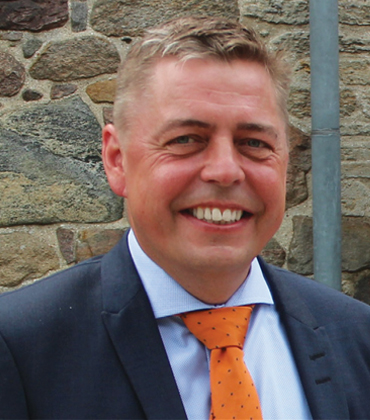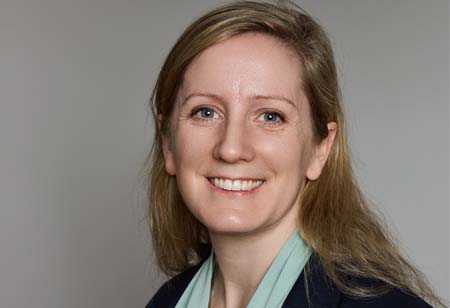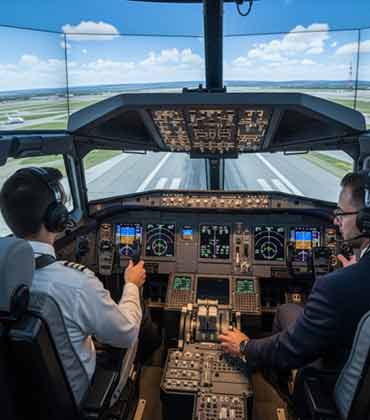THANK YOU FOR SUBSCRIBING
Dimitris Perdikaris spent much of his career in the training halls of the Hellenic Air Force, serving as an instructor pilot and examiner. His early work—introducing new simulation devices into the Air Force’s training program—reshaped how he viewed technology’s role in preparing the next generation of pilots, to meet demanding operational standards. “Simulation tech helped me prepare pilots for the unthinkable,” says Perdikaris. “It let me place them in situations too dangerous to attempt in real aircraft, yet essential for their growth. That was when I saw the full potential of simulation.” As his career progressed, Perdikaris became both a Flight Simulation Training Device (FSTD) operator and inspector. These roles revealed the lesser-seen side of aviation training: the world of regulatory standards and performance oversight. That experience made one truth clear, most simulators either delivered authentic flight experiences or met certification criteria—but rarely both. Perdikaris founded JetSims to close that gap—to merge regulatory precision with the realism pilots truly need. The company’s simulators fulfilled the criteria to strike a balance between technical fidelity and regulatory compliance. Each device is engineered and upgraded, to comply fully with EASA CS-FSTD(A), giving approved training organisations (ATO) and airlines confidence that their realistic training programs carry full regulatory recognition. Trainees step into an environment that feels true to flight—responsive, precise and safe—without compromising compliance. Internally, JetSims maintains a rigorous quality system that tracks device availability, utilisation and restart ratios, ensuring continuous reliability and audit readiness. Even the smallest details are given close attention. Radio communication training, for instance, aligns with CAP 413 standards to ensure cadets use the exact phraseology examiners expect. It may seem minor, but it prevents wasted hours, failed checks and inconsistencies in assessment. “I personally attended the FSTD Inspector Course at the JAA Training Organisation in Hoofddorp, earning certification to ensure full compliance with the latest regulations and standards. I had the honour of being nominated by the Hellenic Civil Aviation Authority and participating in numerous audits. This experience gave me valuable exposure to various synthetic training device technologies, manufacturers, and qualification requirements,” says Perdikaris, CEO of JetSims. For flight schools, that expertise removes a major operational burden. Owning a simulator often means juggling requalification, regulatory audits and ongoing technical checks. JetSims takes that weight off their shoulders, keeping every device flight and examready while instructors focus on producing pilots well-prepared for the complexities of modern aviation.
Top Air Traffic Control Radar System in Europe 2025
SEAAIR strengthens radar interference assessments in the European aerospace and defence market by going deeper than the limits of standard Eurocontrol guidelines. By simulating how radar signals actually interact with terrain and obstacles, it provides insights that conventional checks alone cannot capture. Under Eurocontrol guidelines, when a wind farm or large construction project is planned near radar systems, it is first screened for its proximity to radar systems. If obstacles such as wind turbines are beyond a defined threshold, only a simple assessment is required. If they are closer, a detailed assessment is triggered. Projects that fall under the simple assessment category are evaluated quickly, but the method leaves uncertainties about how obstacles affect radar operations in practice. SEAAIR’s licensed simulation software enhances simple assessments by modelling how radar signals interact with real-world conditions. By analysing effects such as reflections, multipath effects, damping of the main beam and ghost targets, SEAAIR provides a deeper, evidence-based view of potential interference. While simulations cannot replicate every aspect of a radar environment, they deliver greater detail and a stronger foundation for informed decision-making. This helps authorities, defence organisations and radar owners move beyond rulebook assessments toward a more realistic evaluation of potential impacts. “What we try to do is add more detail even to the simple engineering assessments, because we think it gives a better picture,” says Per Andersen, principal consultant and owner. “We try to diminish the natural fear of wind turbines by investigating more and documenting more.” SEAAIR starts with line-of-sight calculations, a standard method in radar engineering. The calculations account for the Earth’s curvature and radio frequency refraction to establish whether radar signals can reach the target. It also screens the path for cumulative obstacles such as wind turbines, buildings, or silos. Wind turbines are a particular challenge because their rotating blades generate Doppler signatures that can resemble those of aircraft. To address this, the team models blade motion based on rotor orientation and rotations per minute, helping radar users determine when turbine movement might overlap with aircraft or drone speeds. Since Doppler processing occurs inside radar systems and proprietary algorithms are not fully accessible, SEAAIR applies field-tested expertise to identify interference angles and patterns.
Top Heavy Gun Mounts Service in Europe 2025
Defense technology is not just about steel, mechanics, and standards. At its heart, it is about the trust that soldiers in the field place in the systems they operate when the pressure is highest. This is where GMS Plesium comes in. Rather than developing heavy gun mounts in isolation, the company works closely with operators and listens to their feedback. The result? Every mount reflects conversations with soldiers about what it takes to perform under stress—how a system should handle, how it should hold up, and how it should feel in the hands of those who depend on it. This direct collaboration has enabled the company to refine its products with practical improvements in weight, ergonomics, and durability, establishing it as a leading name in the heavy gun mount space. CEO Ramon Cabasés says, “Our clients keep coming back because they know we don’t just provide a product; we provide a commitment.” Quality is at the core of operations. All mounts are manufactured to ISO standards and tested against MIL-STD 810G requirements. These are not just laboratory tests but exercises conducted alongside soldiers themselves. The results are systems that withstand heat, cold, vibration, dust, and impact while remaining easy to maintain in the field. Operators consistently note their robustness and reliability: qualities that translate directly into confidence in high-stakes situations. The company’s design philosophy is guided by the principles of simplifying and strengthening. By keeping systems straightforward to operate and robust in structure, GMS Plesium ensures that mounts function as extensions of the operator’s body. Each unit is tested repeatedly before delivery, with the goal of making every component 100 percent dependable. GMS Plesium is also committed to modularity and interoperability. Its product line allows for rapid configuration changes and cross-platform integration, giving armies greater tactical flexibility and, importantly, better resource efficiency, since one system can adapt to multiple missions. Adaptability has also defined the company’s response to unique client challenges. For example, when a European army approached GMS Plesium for a truck-mounted system with an unusual weapon, the team delivered a working prototype within four weeks. Three months later, more than a hundred units had been manufactured and deployed. The project demonstrated not only technical capability but also the agility and responsiveness that defense partners value.
CXO INSIGHTS

Quick Guide to Survive into the New Age of Space Business
Francesco Barba, Project Procurement Manager - Procurement Directorate, OHB System AG

ITP Aero's Technology for the Decarbonisation of Aeronautical Industry
Rob Mitchell, Global Engineering Director, Installations Operating Unit, ITP Aero
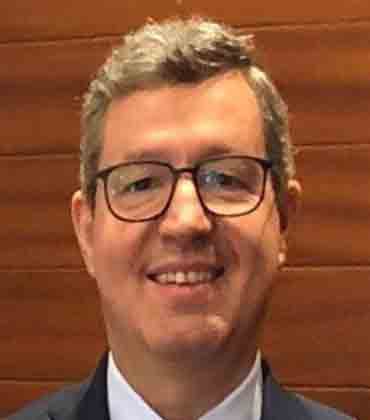
Flexible Aviation Connectivity through Software Defined Radio Unit Convergence with Integrated Modular Avionics (IMA)
Jorge Afonso Pereira, Head of Civil-Military Communications Navigation Surveillance (CNS) Unit, EUROCONTROL
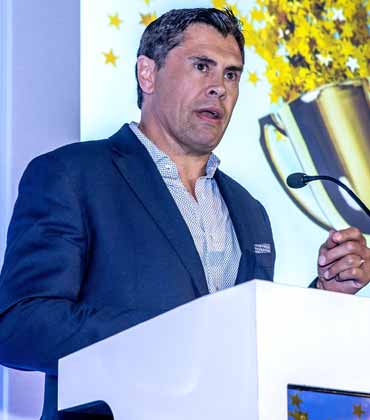
Revamping the future of CNC machining space
Alex Rose-Parfitt, Engineering Director, Raytheon UK

The Evolving Landscape of Irish Military Logistics
Colonel Gareth Prendergast, Head of Strategic Force Design, Irish Defence Forces
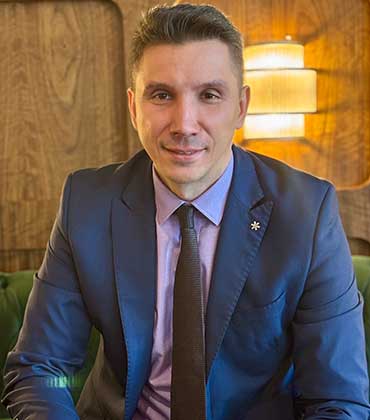
Advancing Aviation Safety: Strategies for Risk Management, Knowledge Transfer, and Global Cooperation
Dominik Zgieb, Director of Aviation Operations Safety Bureau, Warsaw Chopin Airport, Polish Airports S.A
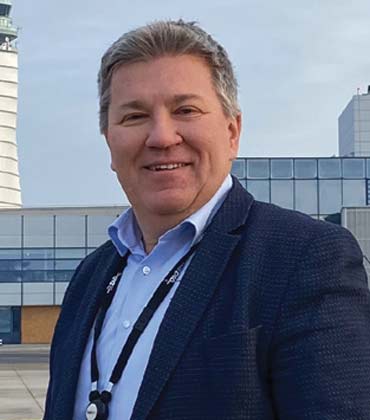
The Quiet Engine Behind Airport Efficiency
Johannes Smejkal, Senior Director Ground Handling Services, Flughafen Wien - Vienna Airport (FLU)
IN FOCUS
EDITORIAL
Europe’s Integrated Vision for Safer Skies
Europe’s evolving defence and aviation landscape reflects a deeper commitment to technological precision and operational excellence. As security challenges become increasingly complex, heavy gun mounts, air traffic control radar systems and flight simulation training, are redefining how Europe safeguards its skies and strengthens strategic readiness. At the core lies the heavy gun mounts service sector, which continues to anchor Europe’s defence resilience. Advanced stabilisation systems, modular designs, and digital integration have transformed traditional artillery into adaptable platforms capable of rapid deployment and precision targeting. These innovations highlight a broader trend that includes merging mechanical strength with intelligent engineering to enhance both performance and safety. Complementing ground defence is the modernisation of air traffic control radar systems, where Europe leads in deploying next-generation radar architectures. With greater emphasis on automation, AI-powered tracking, and interoperability, these systems ensure that the region’s increasingly congested airspace remains safe, efficient, and responsive. The integration of real-time data analytics and cross-border coordination enhances civilian flight management and strengthens defence surveillance capabilities across the continent. Meanwhile, flight simulation training services are shaping the next era of aviation readiness. High-fidelity simulators and immersive training environments are equipping commercial pilots and defence personnel with the skills to navigate complex scenarios, from emergency response to combat preparedness, without operational risk. Together, these sectors represent Europe’s strength fortified by technology, safety reinforced by precision, and human expertise amplified through innovation. This edition highlights the expert perspectives of Christina Aas, Technical Director, SmallSat Systems, Kongsberg Defence & Aerospace and Bill Massaro, WNY Defense General Manager, Moog Space and Defense Group. These esteemed professionals share their invaluable insights on developments and challenges within the sector, along with possible solutions. We hope the valuable insights from industry leaders featured in this edition will help you make informed decisions for your businesses.

However, if you would like to share the information in this article, you may use the link below:
https://www.aerospacedefenserevieweurope.com/edition/december-01-2025-49.html





